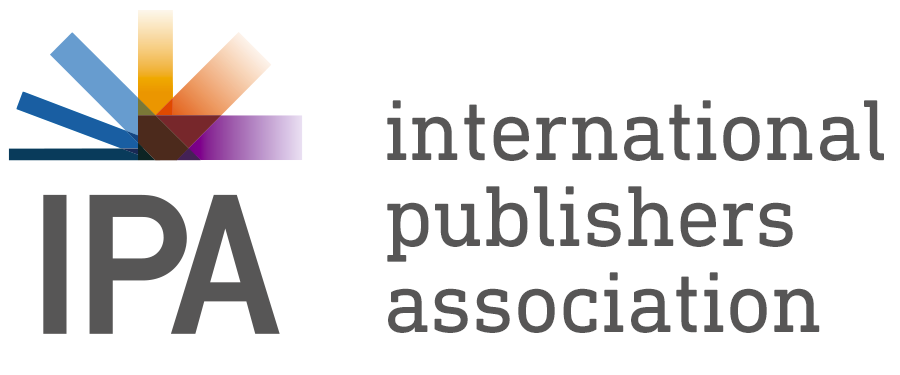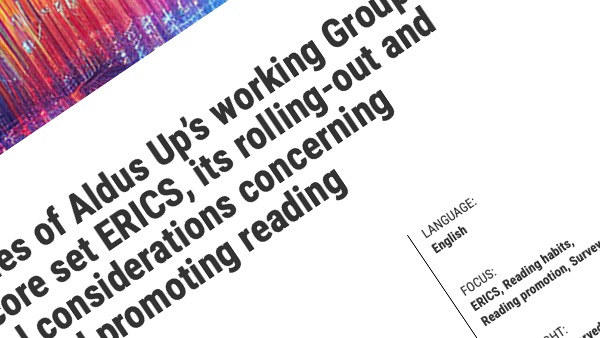One of the most interesting challenges we face when promoting reading lies in showcasing its influence on positive values for our society, encompassing health, the economy, the exercise of democratic rights, and more. Progress in this domain hinges on a seemingly elementary yet crucial step: defining the essence of literacy itself. In our time, this entails recognising the diverse connotations of reading in a landscape where forms, content types, formats, and reading objectives have expanded or proliferated. For these reasons, I have long advocated the utility of a «taxonomy of reading».
The foundation of this need lies in the firm belief that reading, when undertaken for a particular purpose, at a specific moment, and across various media, carries different implications. It is essential to consider these nuances when assessing priorities and crafting public policies.
Within the framework of the Aldus Up project, I was fortunate enough to collaborate once again with Prof. Christoph Bläsi and Kristenn Einarson on the development of a contemporary framework for assessing reading behaviour that would allow for accurate comparisons across European countries: ERICS. As an offshoot of this effort, Bläsi and Dorthe Fröhlich published this Article two years ago about «Reading situations, cumulative effects of reading, and their consequences for surveying and promoting reading».
Christoph Bläsi is professor for book studies at Johannes Gutenberg University Mainz, Germany (since 2009); before coming back to academia he had held senior positions in digital publishing and strategic information management of various major German publishing houses (1992-2004). Recently, I had the opportunity to ask him some of the key questions regarding this developing part of his work.
My first point is that I live in a society where—as has happened in many other societies—reading has been presented as equivalent to a restrictive type of reading: fundamentally literary reading for leisure. However, the challenge we face now is the opposite: an expansion of the concept of reading to include many forms and purposes. He has emphasized the importance of classifying types of reading:
One could say that reading literary fiction – together maybe with reading heavy academic texts – is a sort of pinnacle of reading. But in the modern world, firstly proficiently navigating literary texts is not enough and, secondly, while developing the necessary long-form text reading skills, there are quite a few intermediate stages that are worth considering. Moreover, to be honest, under some circumstances reading other, simpler texts in a productive way is all that is needed or that can be sensibly conveyed. If we are generally convinced that reading is a good thing, because it has a lot of positive effects (which is the case, empirically) and should be promoted, a consequence of the insight above is that there can not only be one objective of reading promotion, reading promotion policies and reading promotion measures – the objectives can reach from enabling people to participate in society to giving people the skills to find aesthetic pleasure in texts or to develop empathy. Different objectives need different programs and different measurements of success.
The above-mentioned also reviews the positive effects of reading by proposing a cumulative approach. In Bläsi’s own words the meaning of this approach is: Different ways of reading naturally have different positive effects. Often ways of reading connect to primary positive effects. Reading newspapers or social media posts can be analysed as having the primary effect that the readers know more afterwards (which is a positive effect). Reading a novel might primarily engage the aesthetic forms of expression of their language (which is also a positive effect, although a totally different one). A cumulative approach looks at ways of reading on the one hand and existing empirical studies on positive effects of reading on the other. It then attributes all the positive effects a certain way of reading is evidenced to have. Reading a novel, to give an example, on top of eliciting empathy has provably positive effects on health and well-being.
Another idea that I find useful refers to sequence that secures a sharper image by using “signatures”: Since there is a rather high number of different separable positive effects of reading (say between 10 and 20) and a way of reading therefor has between 10 and 20 dimensions, I have used spider graphs to represent each way of reading. If the sequence of the positive effects is well chosen, these signatures make it easy to decide which ways of reading are more or less similar to each other.
To have a clear image of the meaning of different types of reading and their impact I asked for an example: «We can attribute different positive effects to “reading educational media on a tablet in school” and “reading a classic of the national literature in an armchair”. The first can be categorised as stronger in participation and knowledge whereas the second can be categorised as stronger in aesthetic pleasure, empathy and health and well-being. All these effects are (often under very specific framework conditions, more work is needed) empirically evidenced – in particular in the given case that reading literary fiction elicits empathy whereas reading non-fiction (educational media!) does not …».
For many years now, I’ve thought that the book industry should refine and adopt as a communications policy the approach to collaboration with those who design public policies in this field. This is a topic I’ve discussed with my friend Christoph on many occasions. From this perspective, he also sees value in the approach of his article: «The main beneficiaries of such a systematisation are probably policy makers and reading promoters, because it will enable them to better target the measures they implement. It is useful for the book industry if the way of reading is used in reading studies and each one gets empirically connected to typical reading material. This will enable – in a similar way to the reading motifs of the Börsenverein des Deutschen Buchhandels (https://vlb.de/hilfe/lesemotive) – publishers to develop, commission and market books for particular ways of reading which are on the rise».
We love to read, but this pleasure requires a neural and economic effort (whether in time or in the cost of books), and this reality is often why many people don’t consider reading. The logical objective of promoting reading is to highlight and convey the myriad rewards that stem from these efforts.
Therefore, it becomes paramount to elucidate, exemplify, and articulate the profound benefits of reading. Yet, I firmly believe that our focus should not merely rest on a broad, abstract notion of reading. Rather, the core lies in connecting each distinct facet within this taxonomy of reading each unique form and situation with its corresponding impacts. This tailored approach ensures that the virtues of reading resonate deeply and meaningfully across varied audiences (public opinion, journalists, politicians…) and circumstances.

